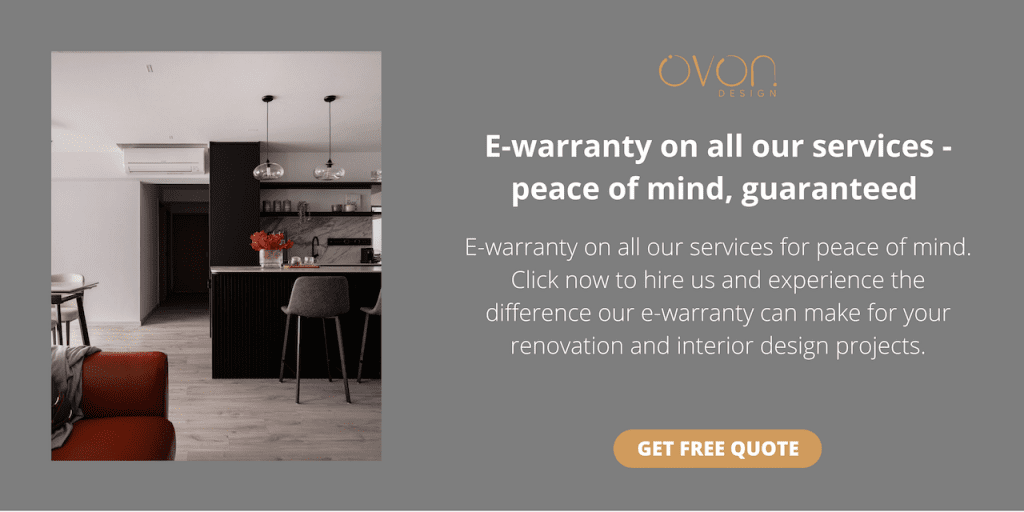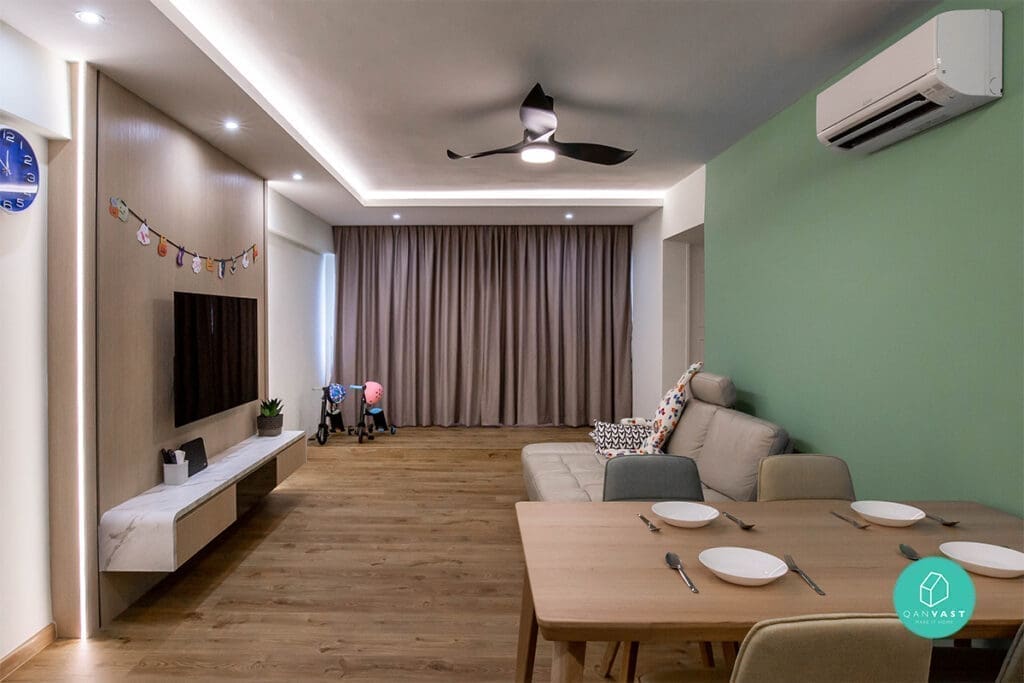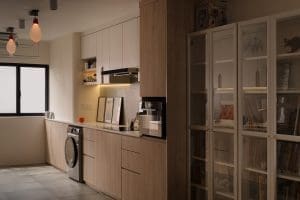Are you considering a condo renovation in Singapore? Embarking on a renovation project can be an exciting yet daunting task. Whether you’re looking to update your condo’s interior, maximize space, or enhance its functionality, careful planning and execution are essential. In this comprehensive guide, we will provide you with valuable tips and ideas to help you navigate the condo renovation process and create a space that reflects your personal style while meeting your practical needs.

In conclusion, undertaking a condo renovation in Singapore requires careful planning, creative thinking, and expert guidance. By setting clear goals, establishing a budget, and engaging professional services, you can ensure a smooth and successful renovation journey. Remember to optimize space, prioritize functionality, and incorporate high-quality materials to create a cohesive and visually appealing design scheme. Stay updated on the latest trends, embrace sustainable practices, and prioritize privacy and safety. For a truly exceptional condo renovation experience, consider partnering with Ovon-D Interior Designer. Their expertise, attention to detail, and commitment to customer satisfaction will help bring your vision to life. Contact Ovon-D today to transform your condo into a space that exceeds your expectations.
1. Set Clear Goals and Establish a Budget
Before diving into any renovation project, it’s crucial to establish clear goals and determine a realistic budget. Ask yourself what you hope to achieve through the renovation. Are you looking to create an open-concept living area, upgrade your kitchen, or revamp the bathroom? Identifying your objectives will help guide your decision-making process and ensure that you stay focused throughout the project.2. Engage Professional Services
While DIY renovations may seem tempting, hiring professional services can make a significant difference in the outcome of your condo renovation. Collaborating with experienced architects, interior designers, and contractors will not only save you time and effort but also ensure that the project adheres to local building regulations and safety standards. Professionals can provide expert advice, innovative ideas, and help you optimize the use of space.3. Optimize Space with Clever Design Solutions
Space optimization is crucial, especially in condominiums where square footage is often limited. Consider incorporating smart design solutions such as built-in storage units, multipurpose furniture, and space-saving fixtures. Customized cabinetry, wall-mounted shelves, and hidden storage compartments can help declutter your living areas and maximize every inch of space.4. Focus on Lighting and Ventilation
Well-planned lighting and ventilation can transform the ambiance and comfort of your condo. Natural light is highly desirable, so consider installing large windows or skylights to invite sunlight into your living space. Additionally, strategically placed artificial lighting can create a warm and inviting atmosphere while also serving functional purposes. Ensure proper ventilation to maintain a healthy and comfortable living environment.
5. Choose High-Quality Materials
Investing in high-quality materials is essential for a durable and aesthetically pleasing condo renovation. From flooring to fixtures, opt for materials that not only look great but also offer longevity and easy maintenance. Consider factors such as durability, resistance to moisture and wear, and sustainability when selecting materials. Engage reputable suppliers and consult with professionals to ensure that you make informed choices.6. Create a Cohesive Design Scheme
When renovating a condo, it’s important to create a cohesive design scheme that flows seamlessly from room to room. Choose a color palette and design theme that reflects your personal taste and complements the condo’s overall architecture. Harmonize elements such as flooring, wall finishes, furniture, and accessories to achieve a unified and visually appealing look. Seek inspiration from design magazines, online resources, or consult with an interior designer for expert guidance.7. Prioritize Functionality
Functionality should be a top priority when planning your condo renovation. Analyze your lifestyle and identify areas where improvements can be made. Consider the flow and layout of each room, ensuring that it serves its intended purpose effectively. Customize storage solutions, incorporate practical features, and allocate spaces for specific activities to enhance the overall functionality and convenience of your condo.8. Stay Updated on the Latest Trends
Keeping abreast of the latest interior design trends can inspire and guide your condo renovation choices. Browse through design publications, visit showrooms, and explore online platforms to discover new ideas, materials, and design concepts. However, it’s important to strike a balance between incorporating trendy elements and ensuring that your condo’s design remains timeless and functional for years to come9. Consider Sustainable Design Practices
In today’s eco-conscious world, sustainable design practices have gained significant importance. Incorporating sustainable features into your condo renovation not only reduces your environmental footprint but can also result in long-term cost savings. Consider using energy-efficient appliances, installing water-saving fixtures, and integrating renewable materials into your design. Additionally, explore options for recycling and responsibly disposing of construction waste.10. Enhance Privacy and Soundproofing
Living in a condo often means sharing walls with neighbors. To ensure privacy and create a peaceful living environment, it’s essential to incorporate soundproofing measures during your renovation. Invest in high-quality insulation materials, sound-absorbing panels, and double-glazed windows to minimize noise transfer between units. Enhancing privacy through thoughtful design choices, such as room dividers and window treatments, can also contribute to a more comfortable living space.11. Plan for Adequate Storage
One common challenge in condos is limited storage space. To overcome this, plan for adequate storage solutions that cater to your specific needs. Consider built-in wardrobes, customized shelving units, and hidden storage compartments to maximize storage capacity without sacrificing aesthetics. Utilize vertical space and underutilized areas such as corners to create additional storage opportunities. Efficient storage not only helps declutter your living areas but also contributes to an organized and visually appealing environment.12. Pay Attention to Safety and Security
Safety should be a top priority in any renovation project. Ensure that your condo meets safety regulations by installing fire alarms, smoke detectors, and fire extinguishers. Consider reinforcing entry points, such as doors and windows, with sturdy locks or security systems to enhance the overall security of your home. Additionally, consult with professionals to assess potential hazards and take necessary precautions to minimize risks.13. Seek Inspiration from Local Designs
Drawing inspiration from local designs can add a unique touch to your condo renovation in Singapore. Consider incorporating elements of Singaporean culture, architecture, or design traditions into your interior. This not only adds character to your space but also helps create a connection to the local context. Embrace the vibrant colors, rich textures, and cultural motifs that reflect the beauty of Singapore.14. Maintain Open Communication
Effective communication is key to a successful condo renovation. Maintain open and transparent communication with your contractors, designers, and suppliers throughout the project. Clearly convey your expectations, address any concerns promptly, and actively participate in the decision-making process. Regular site visits and progress meetings can ensure that the renovation stays on track and aligns with your vision.15. Seek Professional Assistance for Complex Renovations
For complex condo renovations that involve structural changes or extensive modifications, it’s advisable to seek professional assistance. Engage the services of an architect or engineer to assess the feasibility of your renovation plans and ensure compliance with building codes. Their expertise will help you navigate potential challenges, minimize risks, and ensure that your condo renovation is executed safely and efficiently.Leyenda































